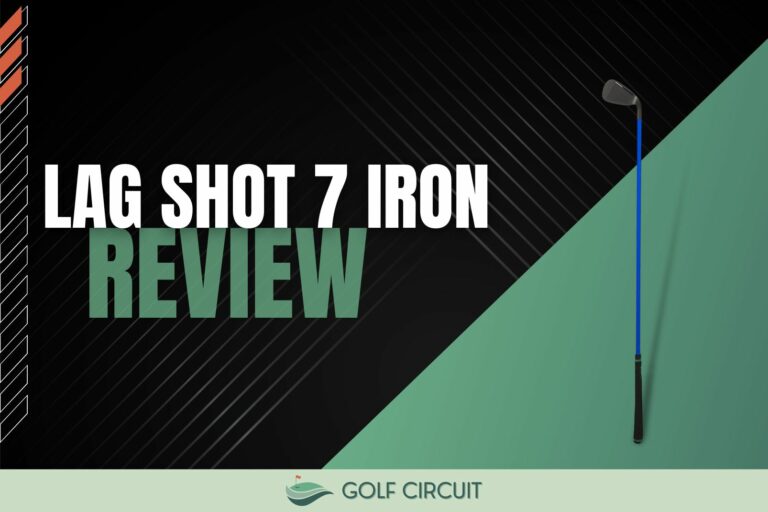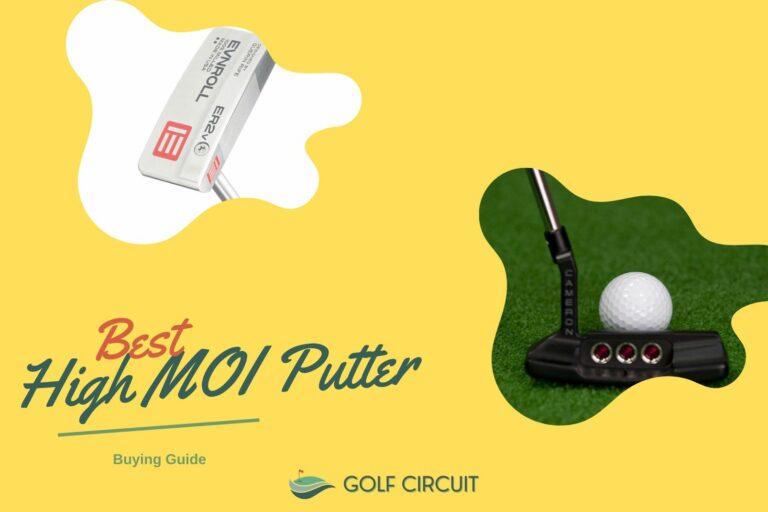2024 Guide to Face-Balanced Putters We Tested

For golfers, the game is made and played in one place only, which is on the green, and it is there that your putter needs to deliver on every stroke.
We’ve found the top five face-balanced putters for precisely that purpose – to get your ball in the cup more often.
Face balanced putters don’t have the club’s weight around the toe, which promotes a more accurate and consistent strike and roll on the ball. Some of the best face balanced putters come from the likes of Odyssey, TaylorMade, and Cleveland, and these can be blade or mallet style putters.
2024 Face Balanced Putters
After we look at some of the best face balanced putters for 2024 we will examine the technical elements of the putter and the putting stroke of a face balanced putter. Let’s look at some of the best-balanced face putters available today.
TaylorMade Spider X Hydroblast Single Bend

Features
- Great Alignment and Feel
- Distinguishing ‘Y’ Shaped Head
- TPU Pure Roll Insert
- 34″ and 35″ Models
TaylorMade’s Spider X is one of the most recognizable shapes and designs in golf today. The Spider X offers great alignment, feel, and sound off the clubface, used by PGA pros like Rory McIlroy and Jason Day. They are certainly some of the best face-balanced putters available, albeit at a premium price.
According to TaylorMade, the white top reflects the best when lining up a putt, and they have dubbed this their White True Path Technology. The distinguishing ‘Y’ shaped head gives golfers a good eye line for club alignment to the ball center and the putting line.
One of the reasons for this putter’s preference is the feel of the face. The TPU Pure Roll insert has 45-degree angle club grooves for smooth forward roll and the satisfying sound of the center strike.
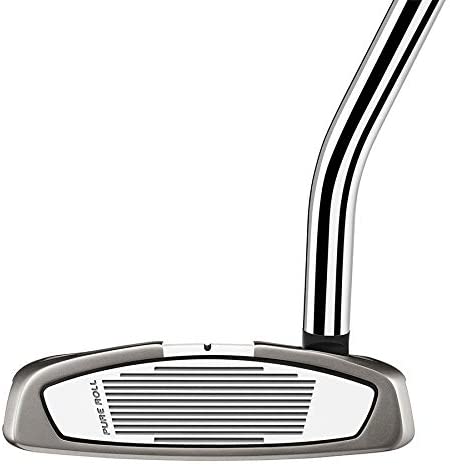
This putter’s titanium head is scratch and nick proof, and it’s available in 34″ and 35″ models in the right and left-handed options.
This putter has a reasonably oversized clubhead, so if you are used to blade putters, the weight and movement of this putter may take some getting used to. You may well need to recalibrate your putting strength with the extra weight – but that’s nothing a few hours on the putting green won’t fix.
Although on the pricey side, the Spider X is an excellent option for golfers that want good alignment technology with a great feel and touch off the clubface, and it comes with the Spider X cover.
Odyssey White Hot OG Putter

Features
- Straight black line on top of the clubbed
- 33″-35″ Models
- Mallet putter type
- Urethane inserts
Odyssey ONLY make putters, and their focus has been to deliver the very best flat sticks for golfers of all levels, and they have made a successful global name for themselves, and no wonder they are used by some of the game’s legendary players – Phil Mickelson for one.
This classically styled putter uses the same urethane insert in the face that Odyssey has been using for the past 20 years, and this gives golfers a great feel on lag putts. While many modern putters have extensive alignment aids, the Odyssey has a straight black line on the top of the clubhead, which is simple to use and see during the stroke.
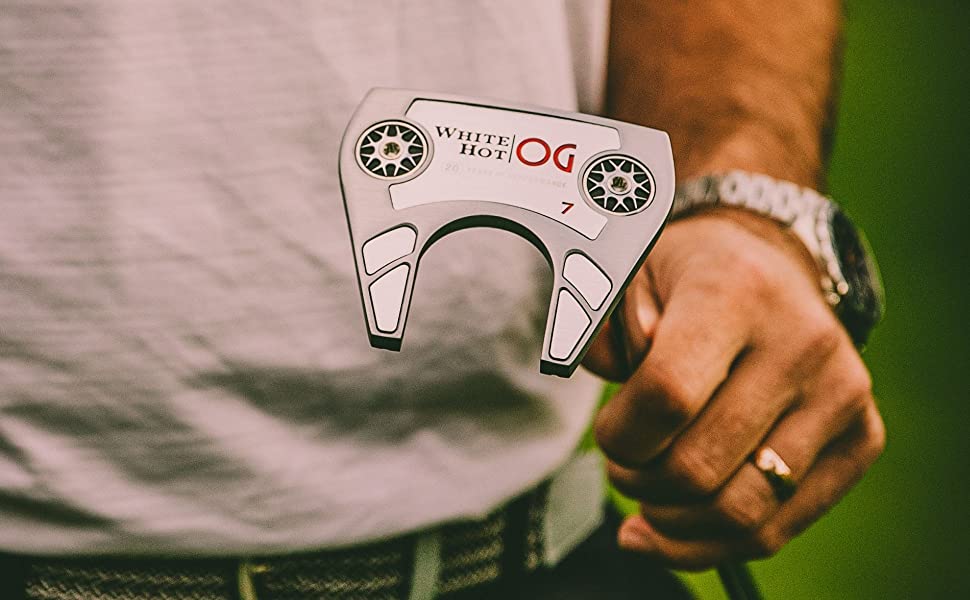
This putter is available in 33″ to 35″ to choose which length suits you better.
While this putter is more expensive than some of the mallet putters available and other blade-style designs, Odyssey focuses on creating and delivering the best flat sticks for players of every skill level and – making their putters worth the investment and this one is no exception.
Pinemeadow Golf PGX MB Putter

Features
- Fraction of the cost of other putters
- Great alignment aids
- Tour-weighted
- Comes with a headcover
This mallet-style putter is similar to the TaylorMade Rhossa Ghost putter but at a fraction of the cost. Many golfers don’t have the option to spend $200+ on a putter, but with the PGX MB, they don’t have to.
The matte black finish allows the alignment aids to pop, and the contrast between the face and the grass on the green is stark, making alignment easier when standing over the ball.
This club is ‘tour-weighted,’ so its weight is comparable to the weight of putters used on tour.
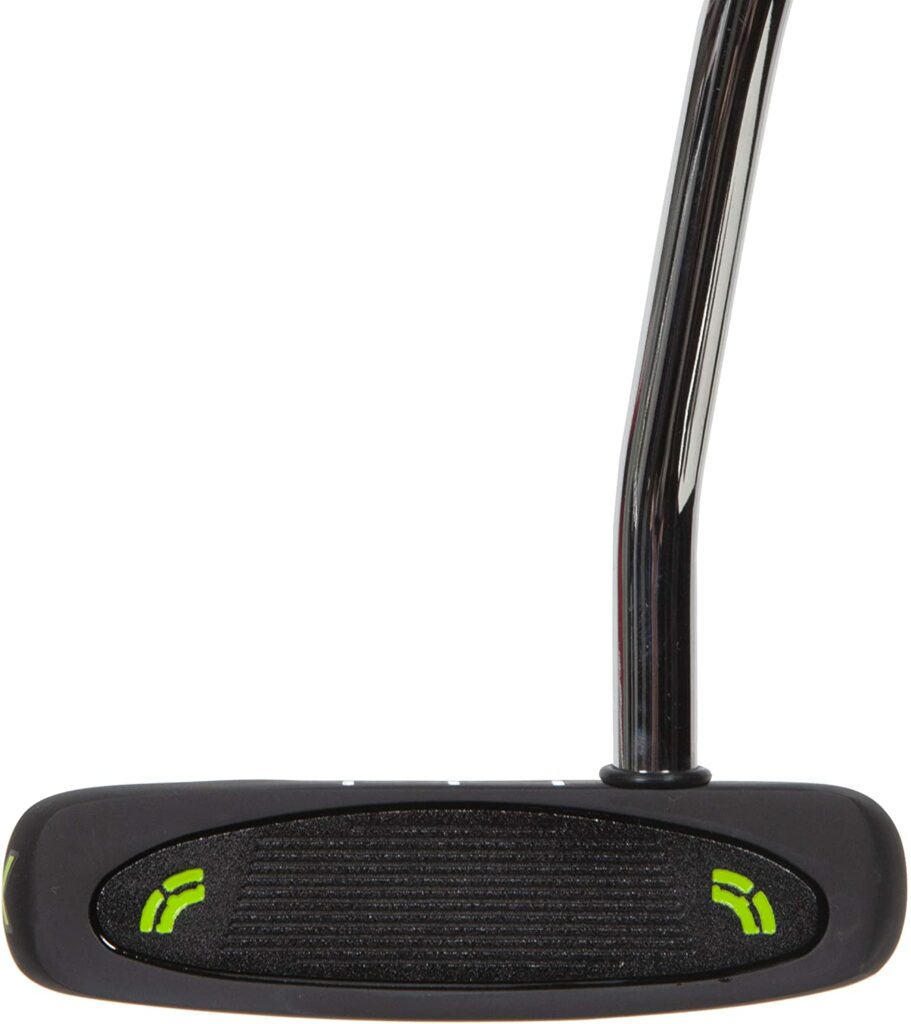
The weighted head gives the ball a good roll and helps control the lag on fast greens, plus the four lines for alignment allow for aiming at the stroke.
It also has the Pinemeadow Spider grip, which gives a good feel in the hands and helps bring the clubface back square to target on impact; plus, it comes with the PGX headcover.
Available in 33″ for ladies and 34″ for men, the cut-outs at the back end make it easy and fun to scoop the ball off the green.
Ray Cook Silver Ray SR500 Putter
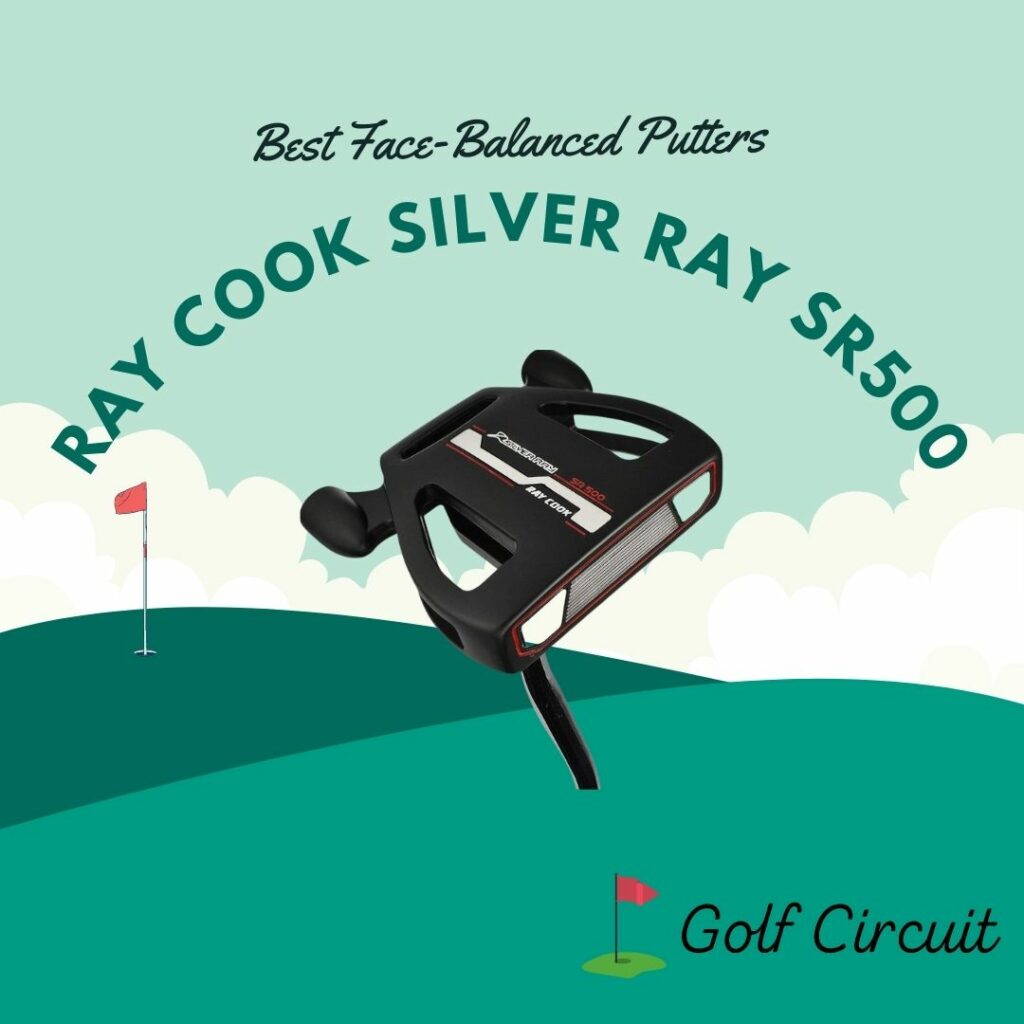
Features
- Great entry level putter
- More alignment aids than other putters
- Mid-sized handle
For beginners and high-handicap players, finding a putter that works for your game without spending a fortune is a challenge, but the SR500 mallet-style putter ticks many boxes at this level of the game.
It is a great entry-level flat stick, and if you like the feel of the heavier putter and more alignment aids, this could be a great choice, and the higher MOI with a mallet putter is more forgiving for beginners as the ball won’t lose speed on the less-than-perfect strikes.
The mid-sized handle is comfortable, and whether you have big or small hands, you will find this putter light to hold and swing, but the heavier clubhead gives good contact and roll with little effort.
This is critical as it allows players at this level to gain confidence with the stroke strength and start to determine the power needed to achieve good lag putts and knock in the short ones.
The red and white alignment points allow for consistent and easy alignment with the ball and target line for increased accuracy.
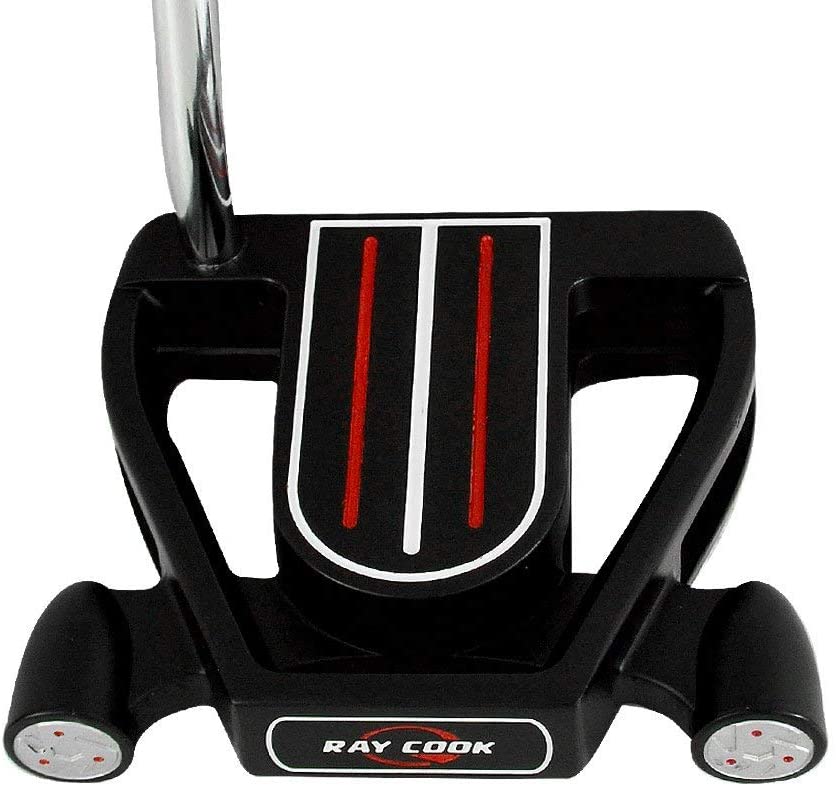
Using this putter at the start of your golf career will help you make more putts and develop your putting understanding and skills for the higher levels of the game.
Cleveland Frontline Elevado Putter

Features
- Weight closer to the face
- Stable design
- Great for scooping the ball
As a high handicap player, you should be working with the most straightforward putting stroke you can: the straight-through stroke. This technique offers the best option for consistency and accuracy and the least likelihood of pulling or pushing the ball.
The Cleveland Frontline Elevado has the weight closer to the face of the putter, and this brings the center of gravity a little more forward to promote a good strike on the ball and create a good roll off the clubface.

This design also promotes stability, meaning that the clubface is less likely to turn at impact and the alignment aids offer excellent assistance when standing over the ball.
The ‘fang’ style design is great for scooping the ball, but they also add to the balance and weight of the club during the swing.
Compared to some other putters, this one is a little pricey, but bear in mind that as a player looking to achieve good putting results, you need to invest in a putter that you can work with and develop your skill and confidence in this aspect of golf.
The Two Putting Arcs – Which One Do You Use?
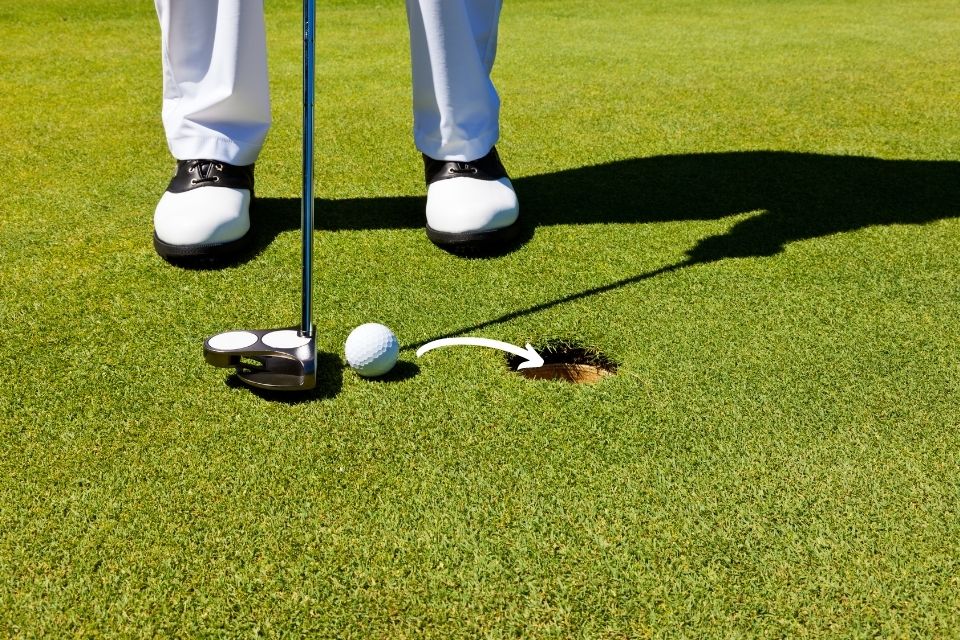
Choosing a putter that works for your putting stroke can be tricky since no two golfers have the same putting stroke, and they are as varied as the golf swing itself.
So to make it more straightforward, we will have a brief look at the two putting strokes, the two different putters, and the five best face-balanced putters in the game.
There are two types of putting strokes: the arc and the straight line. Essentially, these two strokes are simply whether you take the putter back and forth in a straight line or whether you swing the putter in an arc around your body.
Neither is a better or worse technique than the other, but knowing which one you use will help determine which putter would be a better option in terms of consistency and accuracy.
As with all golf clubs, the goal of the putting stroke is to get the putter face square to the target line.
The point of contact with the ball, the arc of the stroke, and the type of putter you are using will undoubtedly affect the consistency of the strike and, subsequently, the quality of the putt.
To check which arc you use, grab your putter and see how the clubhead travels in the stroke. If it’s more back and forward than in an arc, you have the straight-through stroke; if your putter head travels around your feet in a semi-circle, you use the arc stroke.
For the straight-through stroke, the balanced face putter is better, and for the arc stroke, the toe-hang putter would be better suited – now, let’s find out why.
The straight-through stroke is more straightforward from a mechanics perspective and has less risk of pulling the ball than the arc stroke does, and it has less shoulder movement and is more of a pendulum stroke, while the arc has more shoulder rotation in the putting action.
If you prefer the face-balanced putter and want to create a more straight-through putting technique, simply get closer to the ball, which will reduce the degree of arc in your swing.
Below is a simple video from Golfshake.com that you can watch to determine which putting stroke you have.
Face Balanced Vs. Toe Hang Putters
The face-balanced putter tends to have the weight centered, while the toe-hang putter will have some weight allocated to the toe end of the club, and this helps to bring the putter face square to the target line on the stroke.
They can also be more forgiving than other putters.
Aside from the alignment and putting mechanics, the type of putter you use should match your stroke, and you can get this done at your local pro shop or with your coach.
According to Golf.com’s equipment managing editor John Wall, you could benefit from matching your stroke to your putter.
PGA pros that use face-balanced putters include Rory McIlroy, John Rahm, Jason Day, and Dustin Johnson.
One point of interest here is that the legendary Scotty Cameron putters are not face-balanced as they all have an element of toe hang incorporated into their weight design.
The closest Scotty to a face-balanced putter is the Phantom Model X. They make their putters with toe hang ranging from minimum through medium to the maximum.
How To Test Which Putter You Have
If you weren’t aware of the different types of putter available and aren’t sure what kind of putter you have, you can quickly test this.
- Place the putter’s shaft on your finger and adjust it until it balances.
- If the toe of the putter hangs downward, then you have some element of toe balance in your club.
- If your putter face looks skywards, then you have a face-balanced putter.
When you do this, you will also feel the club’s weight in your hands, and the toe-hang putter will feel like it’s pulling down to the ground more than the face-balanced putter.
Which Face-Balanced Putter Do Choose – Blade Or Mallet
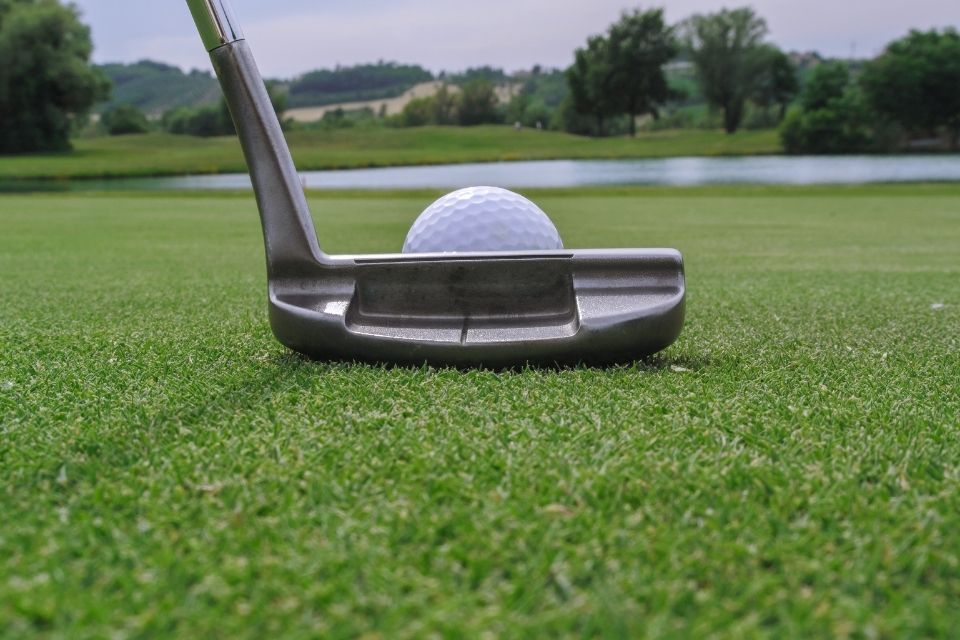
When looking at a face-balanced putter, you need to test out the different putters like the blade and mallet-style putters. Each has a different feel and weight, and you need to find which one feels better in your hands.
Remember, this is where the scores are made and lost, so don’t be in a rush to go and buy the first putter you see on TV.
Mallet putters are generally heavier and have more weight on the clubhead than blade putters, making it trickier to get your stroke strength consistent, especially on long putts.
They also tend to have more alignment aids, and this has its pros and cons. It can make lining up putts more manageable for golfers who need more alignment aids, and for some golfers that prefer a simple straight line, having so many alignment aids can make it more confusing.
However, in this focussed comparison done by mygolfspy, blades averaged four strokes better than mallet putters in strokes gained – this backs up the idea that the straight stroke is consistently more accurate than the arc stroke, and the blade is thus more accurate than the mallet.
When considering a putter, you need to be honest about your putting skill level.
If you are a higher handicap golfer or playing in the mid-teen HI levels, then a putter with some forgiveness and a high MOI putterwould be better.
If you’re a low teen HI player or single figure, you don’t need as much forgiveness and would look at a putter that feels good off the face, delivers rewards for accurately struck putts, and works with your putting technique to be less forgiving on off-center hits.
There are a vast array of putters to choose from today, and that makes finding the right one for your game a little easier and more difficult at the same time. Knowing your type of stroke and what works best for your level of golf is the first step to getting the putter that is best for you.
Aside from the technical aspect, getting fitted for a putter is just as valuable as getting fitted for your irons and driver and should be the first club you choose for your game, not the last- after all, you drive for show, but putt for dough!



